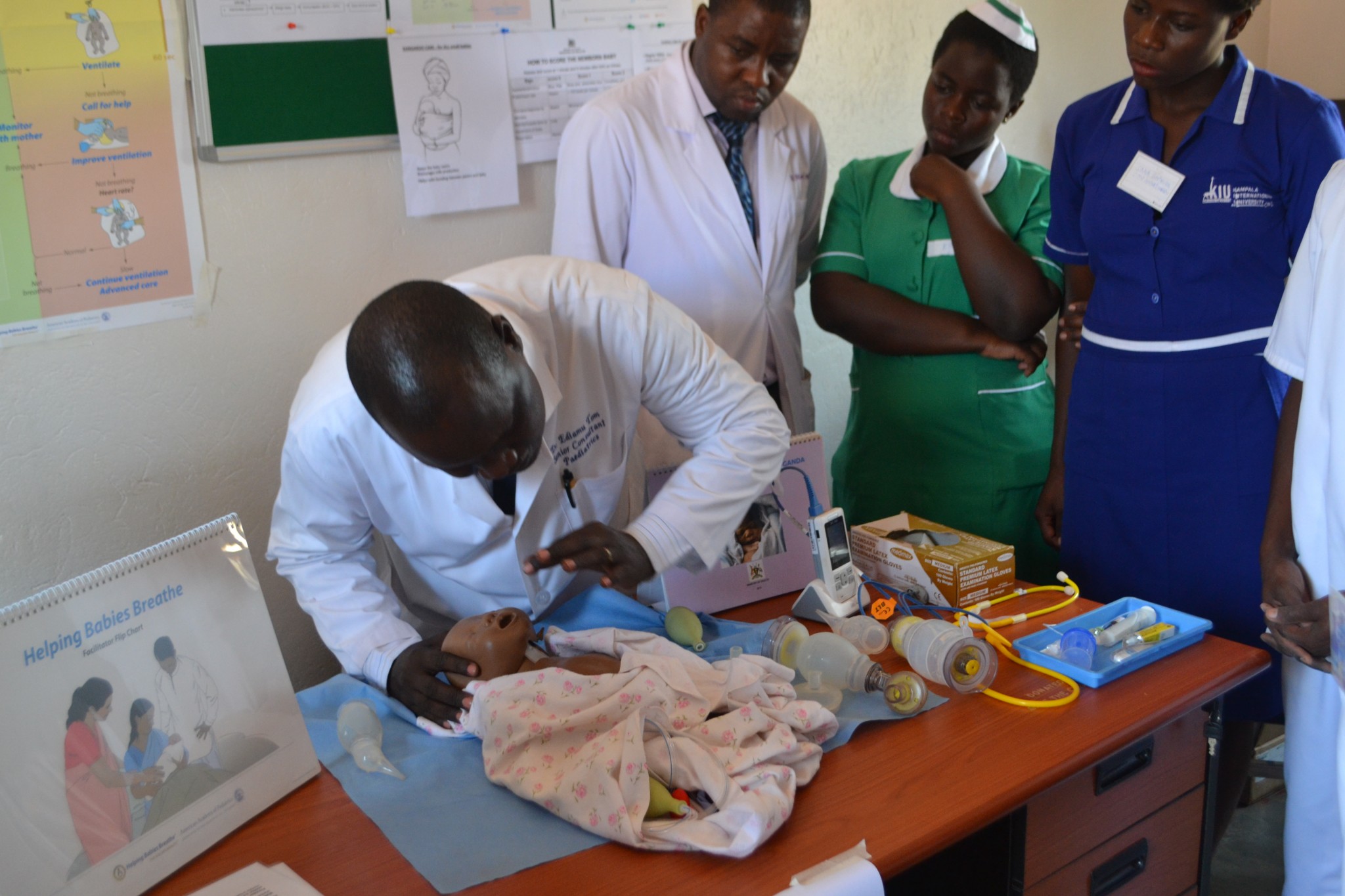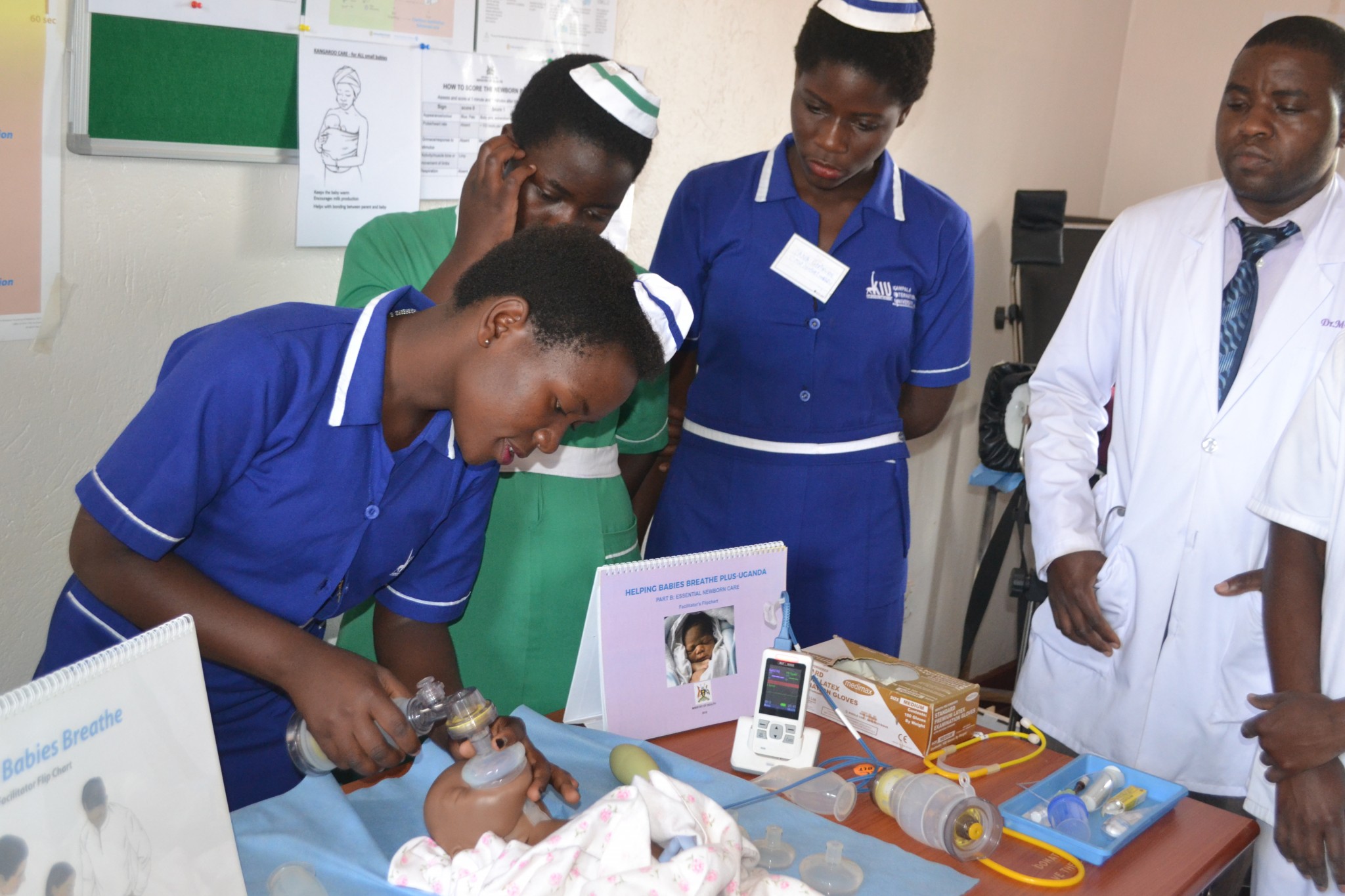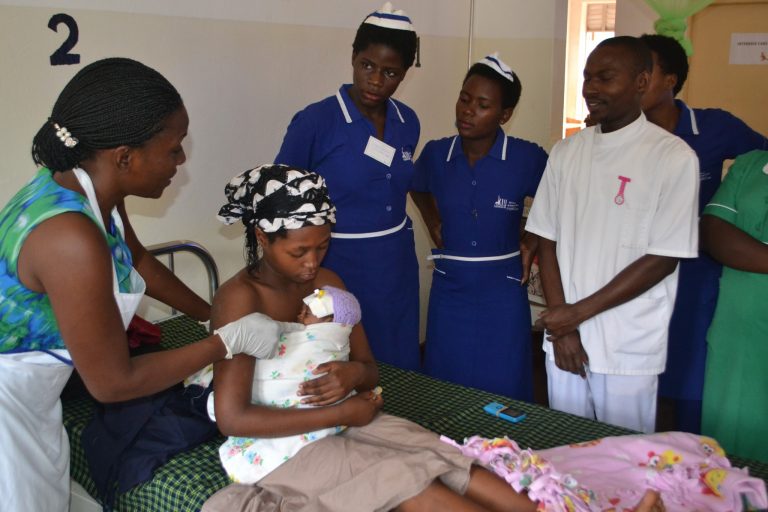“We feel so proud and happy about what we have become. We manage our babies very well and discharge them alive. We no longer run after the doctors except when babies present with advanced complications,” says Sr Gorret Mukhaye, a registered midwife at Kiryandongo Hospital in the Kiryandongo District of Uganda’s Western Region. Many other health workers who underwent skills training in maternal and newborn care at the Hoima Skills Lab under the Regional Learning Network (RLN) share similar sentiments.
When the RLN launched in 2016, it conducted a baseline assessment to understand the causes of high maternal and newborn mortality in Hoima Region. The findings revealed skill and practice gaps among health workers in the provision of maternal and newborn care. These included inadequate basic essential newborn care, newborn resuscitation, use of partographs to monitor labour, infection control, kangaroo mother care, and use of antenatal corticosteroids in women with preterm labour.

Save the Children, in partnership with University Research Company (URC) and Hoima Regional Referral Hospital (RRH), set up the Skills Lab to address these shortcomings. At present, the Lab has facilitated hands-on skills training for 185 health workers drawn from 14 facilities in the region.
Dr Dean Kisembo, the Medical Superintendent at Buliisa General Hospital, credits the training as a very good way of delivering skills and knowledge. “We went through three phases: theoretical sessions, practical demonstrations, and ward rounds,” he recalls. This, he says, not only reminded them of what they had forgotten, but enabled them to acquire new hands-on skills in basic newborn care.
Similarly, Dr Irene Nabitaka, a Medical Officer at Kiryandongo General Hospital, acknowledges that the training has tremendously improved management of newborns at the hospital. “We no longer refer newborn cases to Hoima RRH, except those with congenital abnormalities. We keep our newborns here, manage them here, and monitor them to ensure they are discharged alive,” she says.
Sr Agaba Janet, the Maternity In-charge at Masindi Hospital, says the training was key to improving the quality of services at the maternity ward. “The staff are well equipped with skills and knowledge and can diagnose well the babies’ conditions and manage them without making unnecessary referrals,” she says.

Besides skills building, the training has been a wakeup call to many health workers to improve practices at health facilities. Sr Nassali Juliet, the Maternity In-charge at Ntwetwe health Centre, says there has been a significant change in practices at their facility. “We were not giving antenatal corticosteroids to mothers who presented with risky conditions that could lead to preterm delivery. We were not providing essential newborn care as a bundle. We were not completing partographs for every mother in labour who came to the facility.” Today, she says, the situation has changed, and health workers are meeting all the above requirements.
The high confidence demonstrated by nurses and midwives in managing newborns is another significant training outcome. Sr Miriam Twinomujuni, a registered midwife at Bukomero HC IV reveals that fear of admitting small babies at their facility was very high. “One time a small baby was brought to us and we wanted to refer her straight away to Kiboga Hospital. Incidentally, Sr Juliet Namukasa [a quality improvement officer] was around. She encouraged us to admit the baby here, because she trusted our capacity to manage. We admitted the baby and using the skills and knowledge from the training, we managed her successfully and she survived. Since then, we have managed many small babies and discharged them alive,” she says.
As these cases show, the improved skills and knowledge in newborn care among health workers in Hoima Region is contributing to a decline in neonatal mortality and in the number of newborn referrals to Hoima RRH.
Blog by Richard Mayanja, Save the Children Uganda
Featured photo: Health workers learn about KMC in the Kangaroo Corner at Hoima RRH. Photo credit: URC/Save the Children
